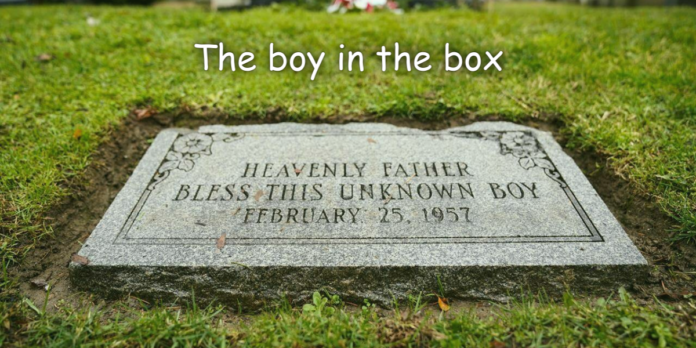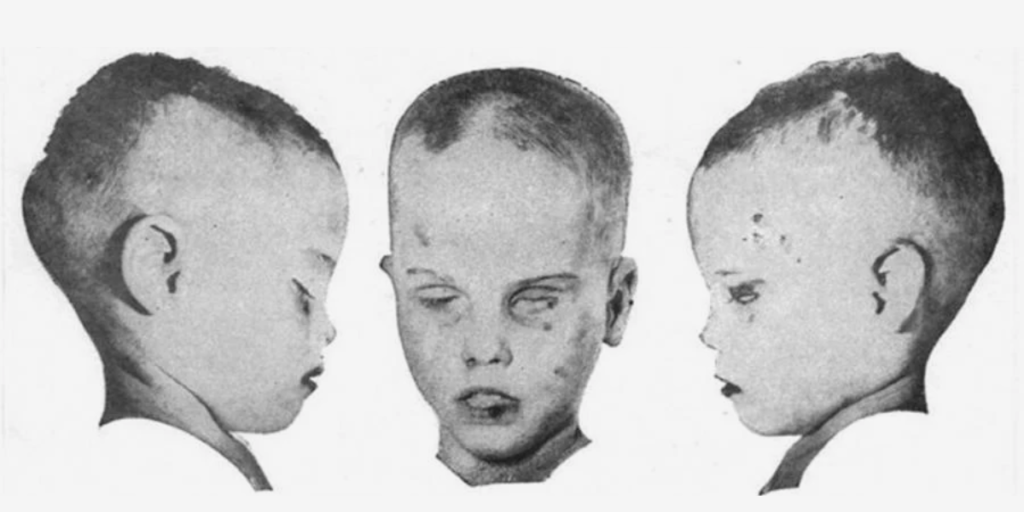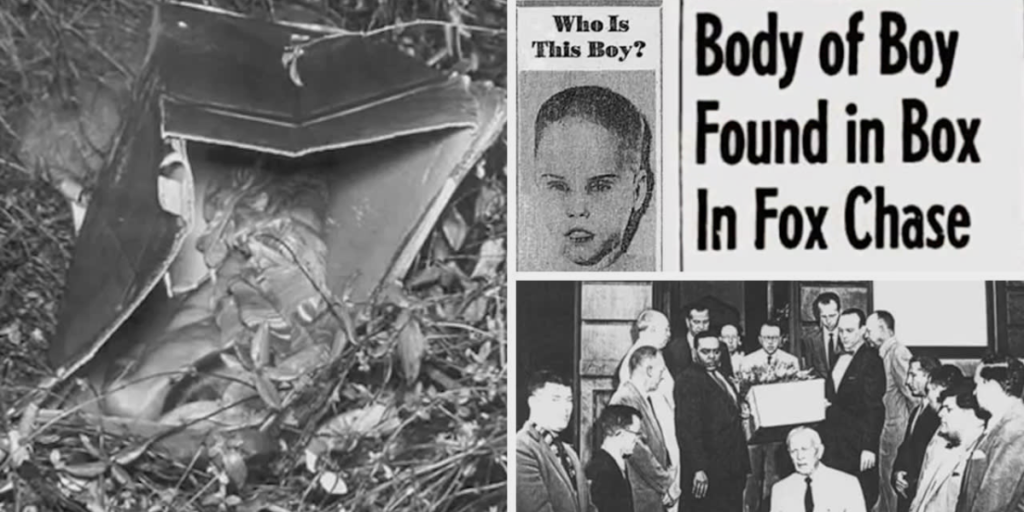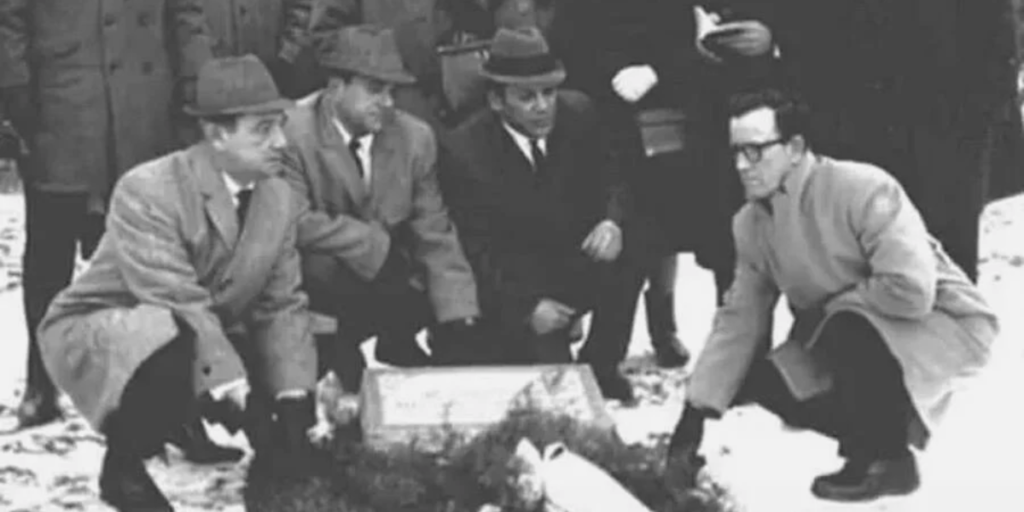In the annals of American crime history, few cases are as haunting or perplexing as the case of “The Boy in the Box.” Discovered over six decades ago, this tragic and mysterious tale continues to captivate and horrify, symbolizing both childhood innocence and the depths of human cruelty. This mystery, often referred to as America’s Unknown Child has left generations of detectives, journalists, and amateur sleuths grappling for answers.
The Discovery
On February 25, 1957, in the Fox Chase neighborhood of Philadelphia, Pennsylvania, a young boy’s lifeless body was found in a cardboard box. The box, originally used to ship a bassinet from J.C. Penney, was discovered by a college student who was checking his muskrat traps. The boy, estimated to be between 3 and 7 years old, was naked, wrapped in a plaid blanket. His hair had been recently cut, possibly after his death, and his body bore signs of severe malnutrition and abuse. He had multiple bruises on his body, indicating a history of physical violence.
The discovery immediately sparked a massive investigation. Despite extensive efforts by the Philadelphia Police Department and the help of hundreds of volunteers who distributed flyers with the boy’s photograph, no one came forward to identify him. The case quickly became a national sensation, with the media dubbing him “The Boy in the Box.”
The Investigation
Early investigations were painstaking. Detectives meticulously examined the box and blanket for clues, but the lack of forensic technology at the time severely limited their findings. The boy’s fingerprints were taken, and his dental records were examined, but no matches were found. His face was reconstructed and widely publicized, yet no one recognized him.
Over the years, various theories emerged about the boy’s identity and the circumstances surrounding his death. Some speculated that he was a victim of an illegal adoption ring, while others believed he might have been abandoned by a transient family. The case saw numerous leads and potential breakthroughs, but each one eventually led to a dead end.
In the late 1950s, detectives even pursued a theory that the boy was a Hungarian refugee, which also proved fruitless. The lack of progress was disheartening, yet the Philadelphia Police Department never closed the case, continuously revisiting it as new forensic methods and technologies developed.
Modern Advances
With the advent of DNA technology, there was renewed hope in identifying the boy. In 1998, his body was exhumed to obtain DNA samples. The samples were entered into national databases, but no matches were found. In 2016, the National Center for Missing and Exploited Children created a new facial reconstruction of the boy, hoping to jog memories and generate new leads.
In 2019, another exhumation was conducted to obtain more advanced DNA samples. This time, forensic genealogists, who had successfully used similar techniques to solve other cold cases, including that of the Golden State Killer, were brought in. They aimed to build a family tree using the boy’s DNA to identify potential relatives and, ultimately, the boy himself.
Theories and Speculations
Despite the advancements, numerous theories about the boy’s identity and death still circulate. One persistent theory involves a foster home located near where the boy was found. Some believe he may have been an unrecorded foster child, but thorough investigations of the foster home yielded no conclusive evidence.
Another theory emerged from a woman identified only as “M.” In 2002, she claimed that the boy was named Jonathan and that he had been purchased by her abusive mother. According to “M,” Jonathan was subjected to extreme abuse and died accidentally. Her story lacked verifiable details despite the initial intrigue and was ultimately discredited.
The Human Aspect
The tragedy of “The Boy in the Box” extends beyond the cold facts of the investigation. This case represents a profound human tragedy—a child forgotten by society, denied the basic dignity of a name. It highlights the darker sides of humanity, the failures of social systems, and the enduring need for justice and remembrance.
For many, the boy symbolizes the countless children who suffer abuse and neglect. His story continues to resonate because it underscores the importance of protecting the most vulnerable among us. The efforts to identify him, spanning over six decades, reflect society’s collective determination to seek justice and provide closure, not only for the boy but for all children who suffer in silence.
Conclusion:
The Boy in the Box remains one of America’s most poignant and enduring mysteries. Despite the passage of time and the advances in forensic science, the identity of this young boy and the circumstances of his death continue to elude us. Yet, his story is a stark reminder of the innocence lost and the unyielding quest for justice. Investigators continue to piece together the fragments of his short life. The hope remains that one day, “America’s Unknown Child” will be unknown no more.





